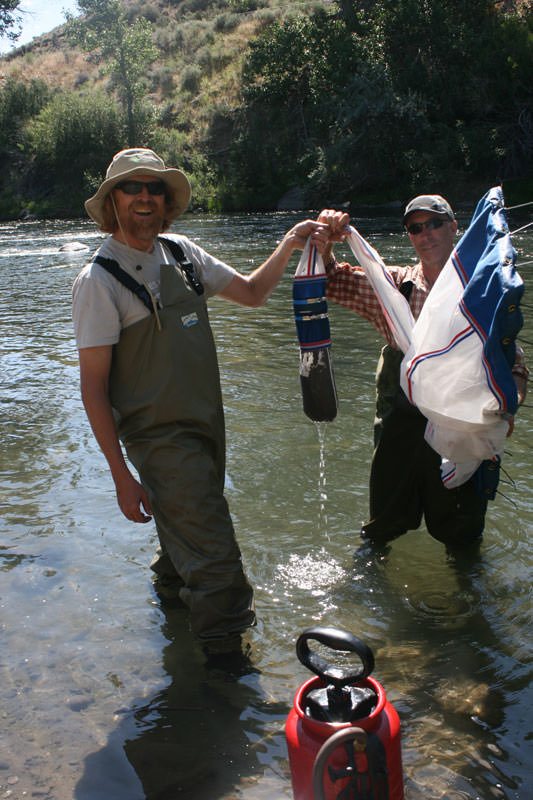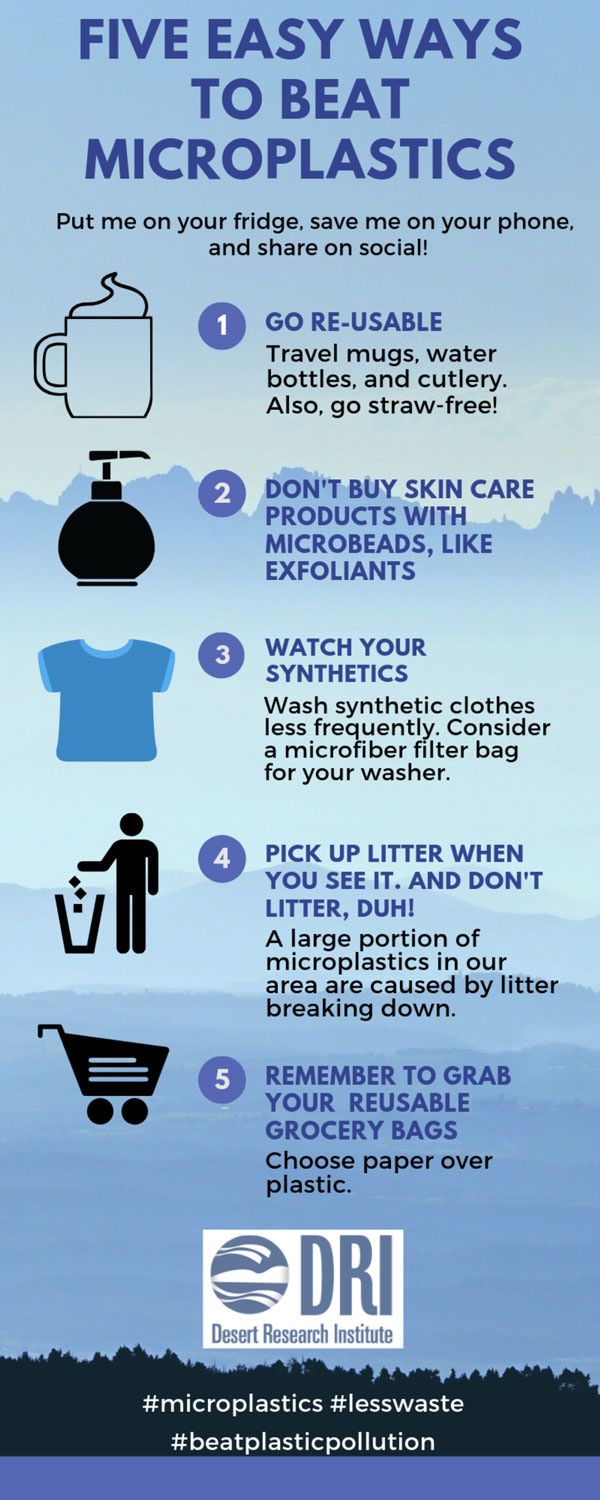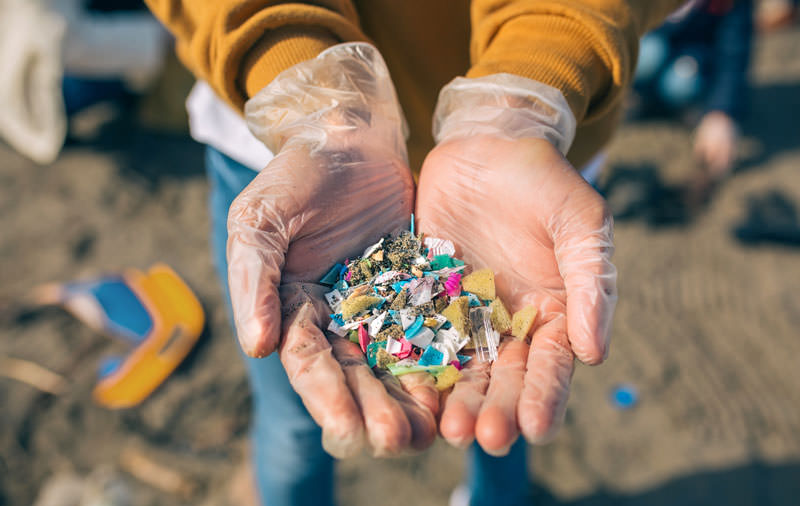Local advocates and researchers study effects of plastics in area waters.
When we think of plastics polluting our local waterways, we usually visualize empty water bottles, straws, or plastic bags nudged against the shores of Lake Tahoe or the Truckee River.
Now there is burgeoning research around the possible environmental and health effects of microplastics, tiny pieces of plastic — smaller than five millimeters each — that come from sources most people would not consider to be pollutants, such as synthetic clothing, facial cleansers with microbeads, and automobile tires.
Diving In
Since 2018, Be the Change, a Reno-based nonprofit dedicated to environmental sustainability, has taken samples of water in the Truckee River as part of its Rivers Without Plastic project.
“It is not clear yet whether there are detrimental effects associated with microplastics,” says Kyle Chandler-Isacksen, founder of Be the Change, along with his wife, Katy.
With the help of his friend, hydrologist Brian Fitzgerald, formerly of the Desert Research Institute, and $2,500 in seed money, Chandler-Isacksen set out to quantify how much plastic was in the Truckee River and to determine the types of plastic found.
The pair also suspected that if microplastics were found in the Truckee River, the microparticles might inevitably make their way into our local drinking water.
After taking three separate water samples over time, their next step was to test the samples, which the two realized they did not have the capacity to do.
So Rivers Without Plastic teamed with local researchers at DRI as well as Samantha Romanick, graduate research assistant at the University of Nevada, Reno and founder of Black Rock Refill, an eco-friendly product and service company in Reno.
The DRI research team is studying the presence of microplastics in surface waters and snow from remote areas in the Sierra Nevada, Lake Tahoe, and the Las Vegas Wash.
“None of this work is published yet and is all preliminary, but the results have shown that plastics are present in Lake Tahoe surface waters, Sierra mountain snow, and Las Vegas Wash surface water,” says Monica Arienzo, DRI associate research professor of hydrology.
As far as determining whether microplastics are present in drinking water locally and in other regions, Romanick says most municipalities do not currently filter tap water for microplastics.
“Therefore, if there are microplastics in our waterways, such as in the Truckee River, they will end up in our tap water in our homes,” she says.
Why It Matters
Working with local organizations is a way to engage the community and communicate the importance of the science of microplastics.
“The work Rivers Without Plastic is doing will contribute to a foundation of scientific information about the extent of microplastics pollution in Nevada freshwater,” Arienzo explains, “so that we will be able to better identify the sources of microplastic, potential harmful effects to plant and animal life, and ways to remove it from the environment.”
Kymberly Drake is a Reno-based freelance writer with endless curiosity about food and drink and the sources that help bring it to our tables.
For details about Rivers Without Plastic, visit Bethechangereno.org/rivers-without-plastic.




